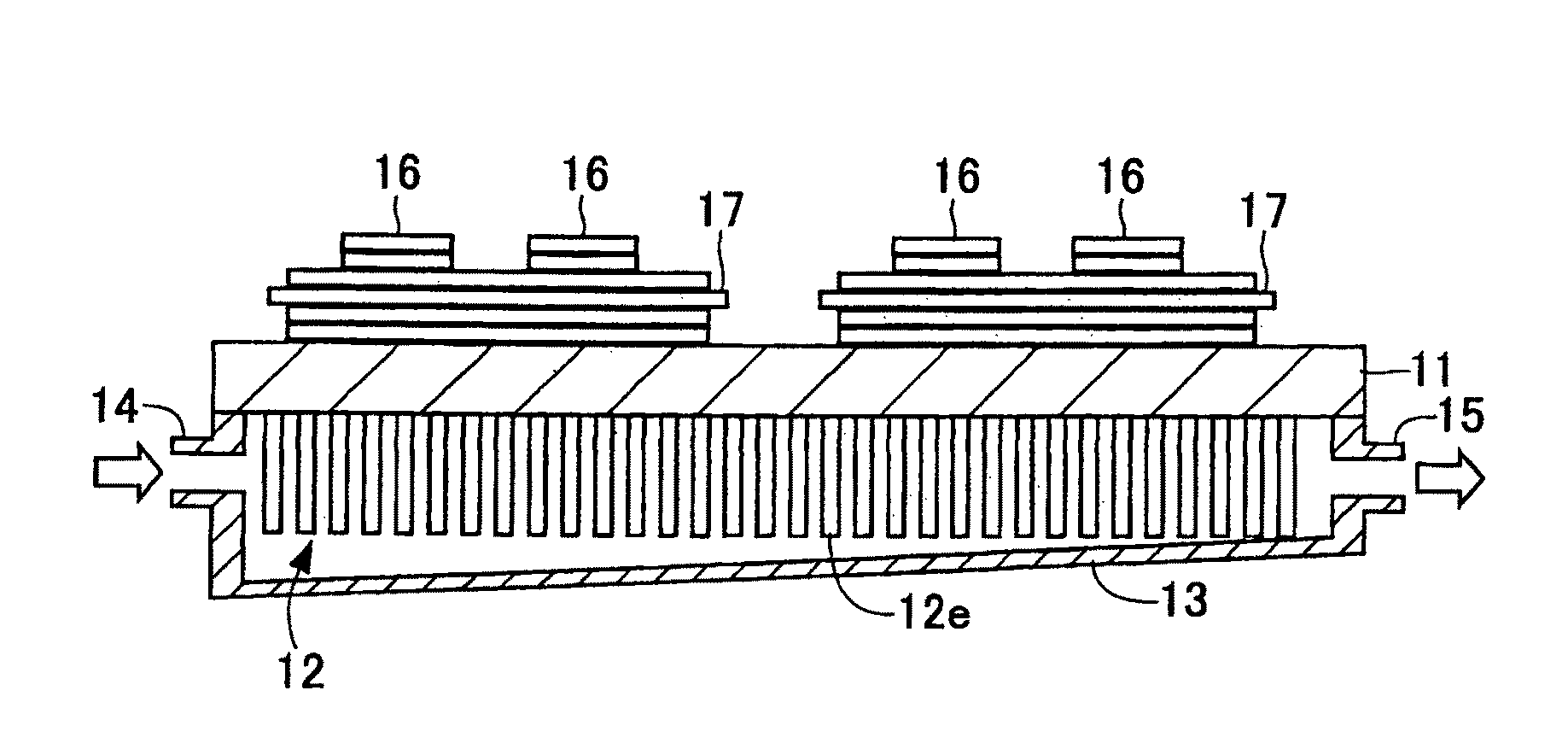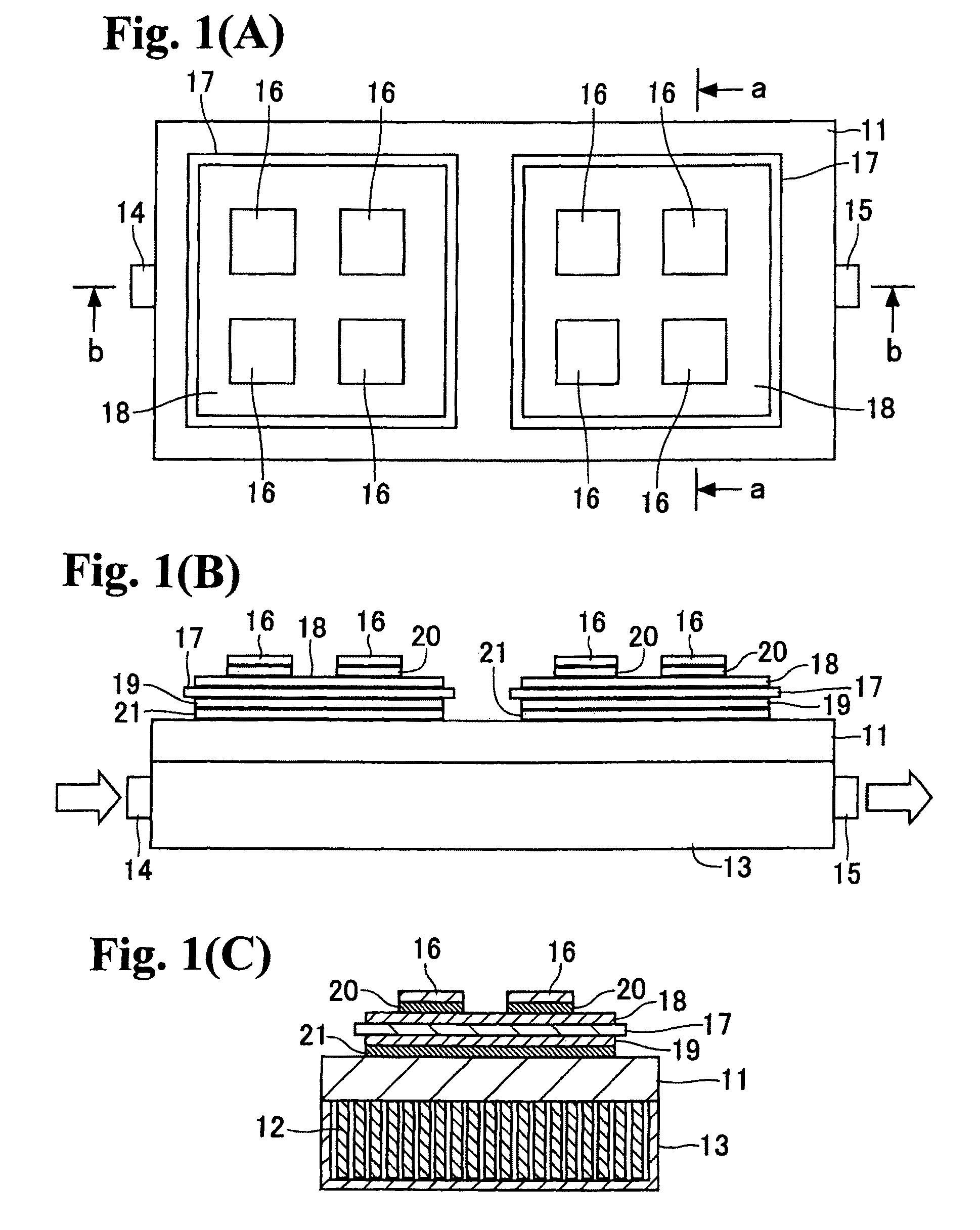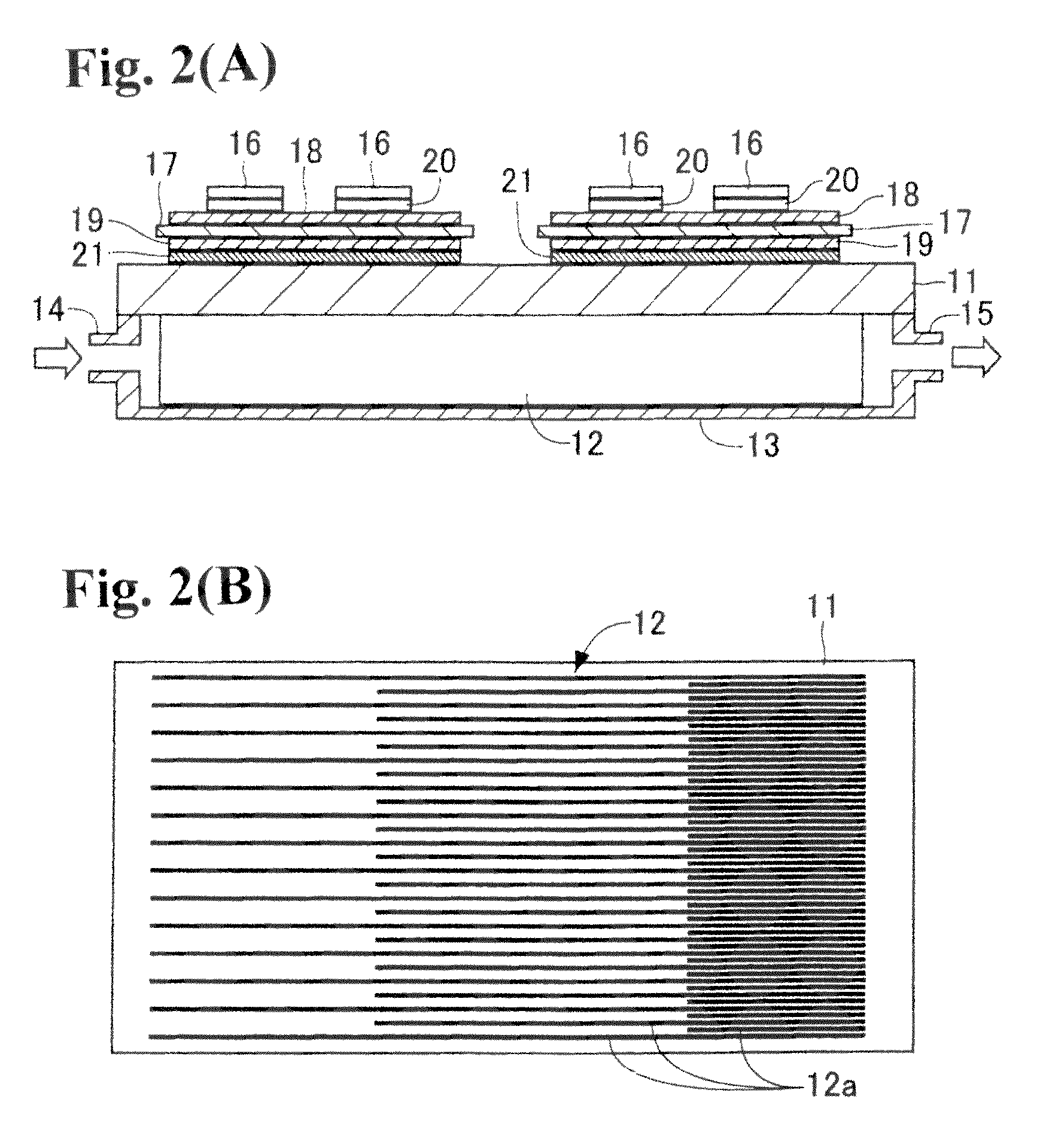Cooling apparatus for semiconductor chips
a cooling apparatus and semiconductor chip technology, applied in the direction of electrical apparatus construction details, light and heating apparatus, basic electric elements, etc., can solve the problems of inconvenient operation, inconvenient operation, and inability to meet the requirements of the application, so as to reduce the cost of manufacturing and increase the chip output.
- Summary
- Abstract
- Description
- Claims
- Application Information
AI Technical Summary
Benefits of technology
Problems solved by technology
Method used
Image
Examples
first embodiment
[0041]FIG. 1(A) is a top plan view of a cooling apparatus for semiconductor chips (hereinafter referred to as a “cooling apparatus”) according to the invention. FIG. 1(B) is a side plan view of the cooling apparatus shown in FIG. 1(A); and FIG. 1(C) is a cross sectional view of the cooling apparatus along a-a of FIG. 1(A).
[0042]The electrical connections on the semiconductor chips, the terminals for external connections, the casing, and the sealant are not shown in these drawings.
[0043]The cooling apparatus according to the first embodiment of the invention includes metal base 11, on which heat sources are mounted, radiation fins 12 are formed on the under surface of metal base 11 and integrated with metal base 11 into a unit, and a duct cover 13 is bonded to metal base 11 such that duct cover 13 surrounds radiation fins 12 and forms a duct (flow path) for a coolant. The radiation fins 12 are made of a metal or an alloy such as copper, a copper alloy, aluminum, and an aluminum alloy...
second embodiment
[0061]In the cooling apparatus according to the invention, radiation fins 12 are pin-shaped (viz., cylindrical) fins 12e arranged along the coolant flow direction in the duct and bonded / connected to metal base 11. In FIG. 5(A), pin-shaped fins 12e having the same diameter and the same height are arranged such that the pitch between the adjacent pin-shaped fins 12e is made shorter from inflow port 14 toward outflow port 15. Due to the fin arrangement described above, the total surface area of pin-shaped fins 12e on a unit area of metal base 11 (hereinafter referred to as the “surface area density of pin-shaped fins 12e”) is gradually higher from inflow port 14 toward outflow port 15.
[0062]The radiation fins in the cooling apparatus shown in FIG. 5(B) comprise a first modified example of radiation fin 12 shown in FIG. 5(A). In FIG. 5(B), radiation fins 12 are pin-shaped fins 12e having the same height and arranged at the same pitch in a section of the duct. The diameter of pin-shaped ...
third embodiment
[0064]FIG. 6 is a top plan view showing the radiation fins in a cooling apparatus according to the invention.
[0065]In the cooling apparatus according to this third embodiment, radiation fins 12 include sheet-shaped fins 12a shown in FIG. 2(B), and pin-shaped fins 12e shown in FIG. 5(A). By combining and arranging fins 12a and 12e as described in FIG. 6, the surface area density of radiation fins 12 is made to be higher gradually from inflow port 14 toward outflow port 15.
[0066]Alternatively, sheet-shaped fins 12a shown in FIG. 6 may be replaced by corrugated-sheet-shaped fins 12b or 12c shown in FIG. 4(B) or 4(C) without difficulty. Still alternatively, pin-shaped fins 12e shown in FIG. 6 may be replaced by fins 12e having different diameters as shown in FIG. 5(B) and arranged as shown in FIG. 5(B) without difficulty. Moreover, the heights of corrugated-sheet-shaped fins 12b, 12c and / or the height of pin-shaped fin 12e may be changed without difficulty such that sheet-shaped fins 12...
PUM
 Login to View More
Login to View More Abstract
Description
Claims
Application Information
 Login to View More
Login to View More - R&D
- Intellectual Property
- Life Sciences
- Materials
- Tech Scout
- Unparalleled Data Quality
- Higher Quality Content
- 60% Fewer Hallucinations
Browse by: Latest US Patents, China's latest patents, Technical Efficacy Thesaurus, Application Domain, Technology Topic, Popular Technical Reports.
© 2025 PatSnap. All rights reserved.Legal|Privacy policy|Modern Slavery Act Transparency Statement|Sitemap|About US| Contact US: help@patsnap.com



